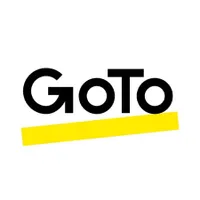What is IT Automation?
Understanding the issue

In our current economy, most businesses are under pressure to get the work done with ever increasing efficiency. The benefits of greater efficiency includes completing the job faster, at less cost, and with less people. In our ‘Crazy COVID times,’ since the ‘Great Resignation,’ it has been a constant challenge for many businesses to recruit and maintain a workforce, and with the difficulties in hiring, they have been forced to “Do more with less,” which makes interest in automation particularly high as of late.
This has all been combined into a perfect storm along with the trend of digital automation, or more accurately, digital disruption, which has been a major driver of business automation. This has been the process in recent years of streamlining traditional business processes, particularly laborious ones, such as timekeeping, in favor of automation, such as with cloud software solutions.
Remote IT Support Software
GoTo Resolve offers a solution for your remote support, management and ticketing needs. Techradar readers can try GoTo Resolve free for 14 days.
What is IT automation?
Where business automation generally focuses on traditional business processes, IT automation seeks to automate IT processes. Through the use of software processes, the automation approach gets applied to repeatable and repetitive processes that previously would be manual work for an IT professional, such as at a datacenter. A real benefit is that IT services can be delivered considerably faster, with considerably less direct human intervention.
By having less direct work, IT staff can be available for other tasks thereby enhancing the workforce. The level of IT automation can vary from small tasks, such as an isolated intervention, and on the larger end, an entire autonomous IT deployment. The idea is that the software can accomplish the task, with minimal administrator intervention.
Not the orchestra
A commonly confused concept with IT automation is IT orchestration. In IT automation, the goal is to have the same basic task done repeatedly, ideally without any intervention. This is different to IT orchestration, where automated tasks get coordinated into a workflow, with a series of steps, and it can include things like permissions along with rules enforcement.
The ghost in the machine
IT automation reduces the intervention steps that an administrator needs to do to be able to accomplish the task, in some cases drastically less steps. To do this, a software package is used, such as Microsoft Windows PowerShell, which can use cmdlets and variables as a script that can substitute for an IT administrator’s actions to get the job done, such as setting up a backup, or a virtual machine. A series of scripts can even be used for an even more complex task.
Sounds like something you want to try? The good news is that Windows users already have it as PowerShell is already integrated into versions of Windows as far back as 7. There are also plenty of alternatives to Powershell, such as Cmder, OpenSSH, PuTTY and Linux SSH.
Sign up to the TechRadar Pro newsletter to get all the top news, opinion, features and guidance your business needs to succeed!
The use case scenario
Proponents of IT automation believe that just about any IT task can benefit from applying automation to it on at least some portion of the task. That being said, there are some more common use case scenarios that lend themselves to this approach.
One use for IT automation is application deployment, which is the process of configuring an application for use at a business. Whether the application deployment is episodic, or continuous integration, or even during the testing phase, IT automation can contribute to a successful deployment of an application. The essential tasks get automated through this approach, which reduces the chances for human error, so the application can be deployed smoothly and efficiently. Another advantage is that with all the rules of deployment having a location that is central and accessible by the IT team, it promotes transparency.
Security is another area that IT automation can be used for as it can be laborious to be done manually, but lends itself to this approach, where rules can be applied on a 24/7, 365 days a year to keep the network secure at all times. Here, the IT administrator sets up the rules to protect the network, which ensures compliance. Once in place, IT automation is vigilant to monitor for any issues. Then there are step-by-step instructions in place so a potential threat can be triaged. Also, should an issue occur, remediation steps are built in, so the threat can be triaged, and if action is indicated, it can then mitigate any impact. What is really amazing is that this entire process can be done in mere seconds!
Pros and cons
IT automation, when implemented well can have some real advantages. The first is the cost savings, as less IT staff are needed to get the job done. Another is the savings in time, as once setup, minimal additional time is needed for daily operation of the task. The next is that operations are done faster than when done manually, such as in the security example above. The final is a reduction in human errors as the drudgery of repeated tasks gets engineered out of the workflow and replaced by software configured to get the job done consistently.
However, it is not all perfection, and IT automation can have some downsides as well. The first is the cost of the investment upfront. While there are cost benefits down the road, it can still be expensive at the start. Another is that IT automation can be inflexible, and some use case scenarios can offer challenges to apply these techniques. Another issues is that as it is rules driven, when a situation occurs outside of the set parameters, it won’t be able to handle it, and there can be higher consequences for the error as automated errors have more potential to cause greater damage. A final issue is that setting up IT automation processes requires a higher skill level, such as using the hundreds of cmdlets to configure a process in PowerShell.
In summary
IT automation represents a leap forward, and we expect to see increasing application of it in the coming years. With a number of advantages, including cost and labor savings, it is easy to comprehend what is driving this trend. As we are in the early stages of this transformation, be on the lookout for IT automation to be applied to even more complex and diverse IT processes in the future.
Jonas P. DeMuro is a freelance reviewer covering wireless networking hardware.
